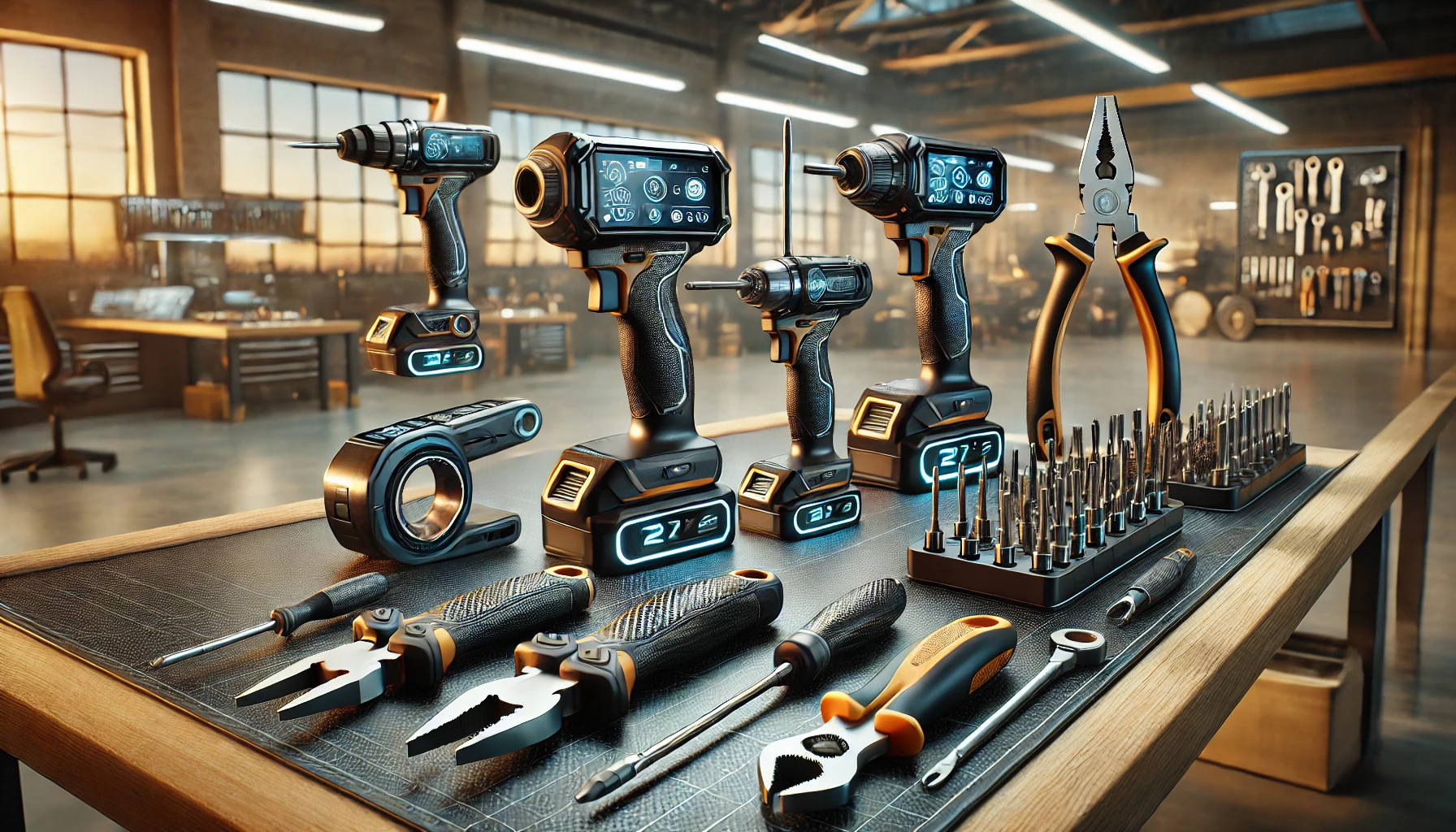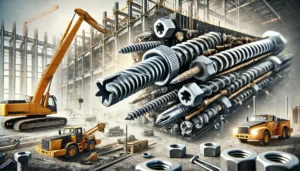The hand tool sector has experienced a lot of development in recent years due to the adoption of new technologies, ergonomic changes, and increased focus on eco-friendliness. These developments are intended to maximize comfort to the user, increase productivity, and lower the negative environmental effect. The following are the recent trends and developments in hand tool design that are disrupting the market.
1. Smart Technology Incorporation
Of all the changes taking place within the sector, the incorporation of smart technology in hand tools is perhaps the most revolutionary. Modern tools fitted with sensors and other connectivity features can now relay real-time information regarding usage, performance levels, and maintenance schedules. For instance, a number of modern wrenches are fitted with torque sensors and will notify the user once the set torque has been reached. Smart tools are designed to prevent over tightening, which would damage materials and machines. These tools offer improved workflows with outstanding levels of accuracy which can turn mundane tasks into effortless jobs.
Additionally, smart tools can monitor performance across a specified period to reveal trends and pinpoint issues before they become a problem. With these tools, productivity increases significantly due to the ability to apply maintenance measures before the tool fails rather than after. Thus, tool down time and chance of failure are reduced.
2. Ergonomic Enhancements
Comfort is one of the most increasing areas of concern in tool use, which in turn has greatly modified the design and shape of tools. Tools are designed today with comfort grips which are meant to lower stress levels on the user’s body while increasing comfort. An example of such a tool is the ergonomic hand tool that has been made to specifically be gaped on in order to relieve as much stress as possible. This fully contoured hand tool helps out in combat against fatigue and discomfort which is important for long hours of work.
Some modern tools are manufactured from light materials to ease and increase the duration of tool use while some tools are made with ventilated grips which can adjust to the user’s needs to optimize his/her hand’s size to the tool’s handle. Such sorts of alterations help users to work with minimal discomfort and fatigue thus allowing them to work more than they otherwise would.
3. Sustainable Materials and Eco-Friendly Designs
People use hand tools that are manufactured with care and concern for the environment. Because of the increasing growth for eco-friendly products, manufacturers are shifting to these materials in order to lower their global emission. Instead of designing tools that are easily breakable and hence getting replaced constantly, tools nowadays are being made from recyclable materials which helps lower emissions.
Apart from the use of sustainable materials, tool manufacturers optimize tools for the future by making sure that they are recyclable at the end of their life. This causes the creation of a circular economy in which tools are reused or repurposed which helps reduce waste and protect the environment. These eco-designs serve the needs of the planet while also serving the market where consumers actively seek sustainable products.
4. Innovative, Customizable And Versatile Tools
While there is a growing demand for a multifunctional workspace, there is also an increasing need for customizable and professional-grade handheld tools. These enable users to add parts or accessories for different tasks, making them a part of many new professional functions. A single tool could, for instance, have wrench or screwdriver heads to augment the versatility of that single tool beyond just one task.
Tools that enable personalization and custom modifications help any professional looking to save space have direct access to all the tools they could need. This changes the way any person works, helping them minimize the number of used tools that they have to beg around on hand, allowing users to experience improved focus and efficiency.
5. Advanced Materials for Durability
Modern techniques practiced in the material sciences field resulted in the crafting of hand tools utilizing alloys and composite materials, which are exceedingly durable. This helps tools resist wear and corrosion, which helps tools work under difficult conditions. An example is tools made with carbon fiber composites that are exceptionally strong and lightweight, therefore, much easier to operate for cumbersome works.
The incorporation of advanced materials increases the lifespan of hand tools, meaning replacements are few and far between, as well as ensuring that the tool is effective for an extended period. Both of these improvements make innovations cost-effective while minimizing the amount of tools that are thrown out resulting in fewer practices that are harmful to the environment.
6. Digital Integration for Maintenance and Calibration
Likewise, the development of new tools incorporates sophisticated technologies that allow tool maintenance and calibration more digital. New tools that come with built-in technology can measure the amount of wear applied and tell the users when the tool needs servicing. Having new technology tools makes servicing more convenient and inexpensive while ensuring the tool does not get damaged and is always in good working condition.
Certain tools now come with digital self-calibration that eliminates the use of external calibration devices which guarantees that the tools are working accurately and minimizes possible errors and inaccuracies to a minimum.
7. Compact And Lightweight Designs
In the modern world, hand tools are much more portable which is beneficial to those that work in the field. Due to their small and lightweight design, these tools are simple to transport and easier to use. For instance, power cordless drills have become smaller and lightweight while still retaining their high power levels. This innovation has enabled users to work in more confined spaces or for longer periods without becoming tired or strained.
Everyone can now have easier access to the tools and they do not need to worry about having heavy tools that might be difficult to operate and handle. Reducing the size and weight increases its versatility and aids more people which translates into user-friendly products.
8. Enhanced Safety Features
In hand tool creation, safety is still an important factor, but new developments today include a range of features that help automate safety for the user. Some of these features include automatic shut-off, non-grip palms, and other guards to avert accidents. For instance, some tools come equipped with built-in safety devices which reduce the chances of misuse or over-activating the tools, thus assisting in minimizing damageable injuries.
The incorporation of non-slip grips and softer handles padded help guarantee that users grip the tool with a firm hand which helps during usage. This guards against the chance of the tool slipping or the user losing their grip, thus reducing the chances of accidents being inflicted. Having these features or enhanced tools is crucial in limiting the rate of injuries occurring at work places.
9. Integration with Storage Systems
Today’s hand tools are more sophisticated as they now come with the ability to seamlessly integrate into storage systems, enabling easy tool management and organization. Modular storage systems make it easier for the equipment to be managed as well as ensuring that the equipment is packed in a safe and retrievable manner. This integration helps users organise tools reducing searching time required to retrieve some of the tools as well as helping in ensuring the tools’ maintenance.
Some tools can now be placed in specially designed areas within a toolbox or a storage system to prevent damage and enable quick access to the right tool for the job.
10. User-Centric Customization
Recent innovations have resulted in the development of tools that come with adjustable features like different lengths of handles, removable heads, and customized grips. These changes make it easier for users to accomplish their tasks in a more efficient manner.
For instance, ergonomic adjustable wrenches with handles can be changed to the appropriate length and provides the user with a better grip. This type of customization means that the tools can be used for different types of tasks and even for different types of users.
Conclusion
This industry is undergoing innovation due to rapid growth in the use of advanced materials, new technological methods, and improved designs which are increasing the tool’s effectiveness, sturdiness, and safety. Whether it is smart tools equipped with digital features or wonder tools designed to minimize fatigue, these innovations change how tools are utilized in the workplace. If this trend keeps up, we can expect even further developments that improve user experience and efficiency. These innovations will greatly help professional and DIY users since the tools are helped in completing a variety of tasks safely and efficiently.










